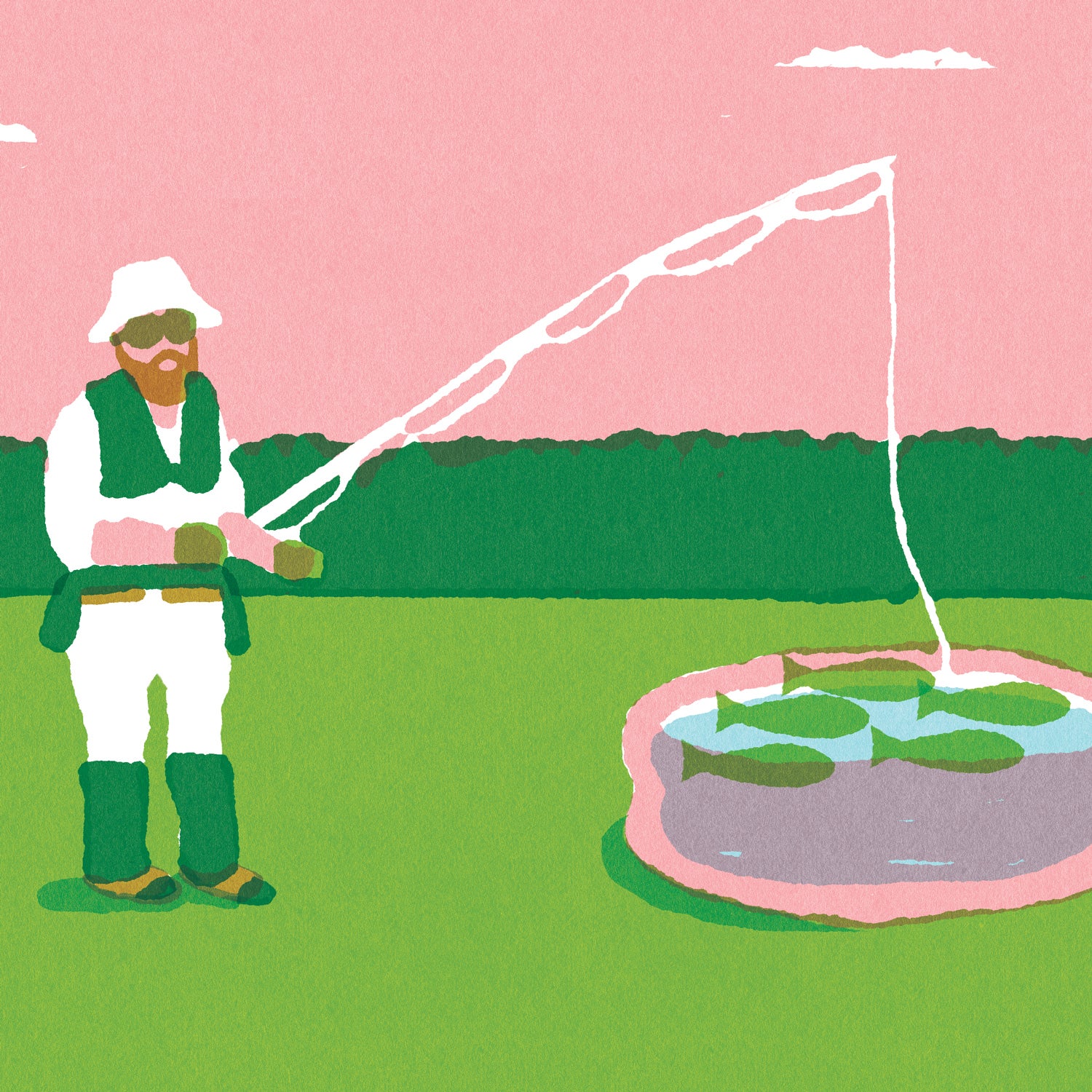It all started in 2011, when Greg McEvilly, then a graduate student studying cross-cultural communications in Dallas, fell out of a poorly made hammock on a camping trip. “Now this is a problem I can fix,” he thought. So McEvilly designed a lightweight one-person hammock made from unbreakable ripstop nylon. He called the brand . He had prototypes made, but being in grad school, McEvilly didn’t have the cash to pay for a full manufacturing run. So he turned to an online crowdfunding site that was just a couple years old at the time:
“As a new company starting out, we had no brand awareness,” McEvilly says. “Kickstarter solved a few things. It was a direct way to connect with early adopters. And I didn’t have to have the product ready to ship immediately. You get this patient group of customers willing to pledge their support, then see products months down the road.”
He set a goal of raising $15,000 over the next 50 days. On day two of the campaign, the gear website Uncrate and money began pouring in. He raised from some 1,900 backers, as they’re called on Kickstarter. With that, his company was born. Kammok is now six years old and does millions in sales each year. Seven full-time employees work at the headquarters in Austin, Texas. By most definitions, it’s no longer a scrappy startup.
Yet roughly once a year, McEvilly and his team return to Kickstarter to raise funds for new products. They’ve done four more crowdfunding campaigns since that first one: a rainwater-collecting tarp for a hammock, a customizable sleeping bag, a two-person tent hammock, and a technical outdoor blanket. “Kickstarter is part of who we are and how we started,” McEvilly says. “It’s a trusted platform that offers accountability and visibility. I don’t foresee us ever growing out of using crowdfunding as a powerful way to reach early adopters.”
Kammok isn’t alone in this long-term commitment to crowdfunding. More and more outdoor brands, including well-established names, are repeatedly turning to sites like Kickstarter, , and to raise capital and boost marketing. But are there risks to this strategy? Can a brand reach a point of crowdfunding saturation where potential backers simply roll their eyes and take their dollars elsewhere?
Micah Hinton, a former sales manager at an outdoor company that started on Kickstarter and has continued to use it, says yes. He advised his former company (which he asked to remain anonymous) against crowdfunding excessively. “I thought it was kind of a gimmicky platform that sooner or later would ring disingenuous to the consumer who first discovered the company and decided to invest in this new product, and then a year later, there’s yet another product,” Hinton says. “If the company already has good sales, as a backer, what are you really helping? Are you helping them grow, or are you just giving them an interest-free loan?”
Hinton says he doesn’t think Kickstarter is a bad way for young companies to launch products. “I just question how long can you do it where the community of backers still feels like you’re a young, up-and-coming company that needs support,” he says. “To me, Kickstarter is something you’d use to launch your first product, and then you’d move on to more traditional sales platforms.”
Ashley Rankin, who founded the women’s mountain bike apparel company Shredly on Kickstarter in 2012, says she’s never felt like she could return to Kickstarter after that initial launch. She now uses traditional lines of credit to fund her five-year-old company. “I’ve always had the impression that Kickstarter backers wanted to help you get started, then they wanted to know you could take it from there yourself,” Rankin says. “I didn’t see it as a repeat venue, since I felt like I owed it to everyone to be sustainable on our own after that.”
With some brands that continue using Kickstarter past their launch, subsequent campaigns don’t end up nearly as profitable as the first. Take the case of Rumpl, the outdoor blanket company that got its start on Kickstarter in 2013. Its first campaign for the company’s original blanket drew in more than $216,000 in 2013. Its fourth campaign, for a puffy poncho, raised just $72,000 in 2017. That’s either a sign of customer fatigue—or maybe the poncho just wasn’t the right idea for the platform. “The poncho was a great idea,” says Wylie Robinson, CEO and co-founder of Rumpl. “We just weren’t sure if it was a great idea to launch a piece of apparel.”
Yet many outdoor brands, including Rumpl, say they're going to continue using Kickstarter simply because it's lucrative. “It’s cash-flow stabilization. It keeps the lights on,” says Robinson. “Kickstarter is where Rumpl got its start, and I like being in contact with that community at least once a year.”
Of all the outdoor brands using the crowdfunding platform, may be the most successful. The San Francisco–based company began on Kickstarter in 2011, when founder Peter Dering created a clip for attaching a digital SLR camera to a belt or backpack strap. , and just like that, $364,000 rolled in from 5,200 backers. Since then, the company has released a Kickstarter product annually and has grown immensely in the process, doubling in sales year over year. It now has a lineup of more than 50 products and 30 full-time employees. This November, Peak Design launched , pitching an upgraded version of that original camera clip, plus an updated camera strap, with a goal of raising $100,000. A whopping $1.3 million rolled in over the five-day campaign. That isn’t even the company’s most successful promotion: Its Everyday Messenger Bag garnered $4.8 million in 2015, and the Everyday Backpack raised $6.5 million a year later.
These campaigns offer the company cash up front to cover manufacturing costs and lets it avoid having to sell equity. Peak Design makes less money per product selling on Kickstarter than it would selling direct—it offers Kickstarter backers a discount, plus it pays service fees to the site—but it’s risk-free manufacturing. The company avoids taking out a loan, according to David Anhalt, chief financial officer for Peak Design, and uses the crowdfunded money instead.
“Typically a company like ours that’s launching physical products has to come up with money to procure materials, do the research and development, complete testing, manufacture the product, then ship the product to our warehouses—all before we’ve even launched the product,” says Anhalt. “That’s a huge amount of investment months before the product even launches. If we had to do that, we wouldn’t be able to afford it. Kickstarter allows us to almost eliminate the cash-flow crunch of building and making things.”
Instead of selling equity or taking on outside investors like most startups eventually have to do, Peak Design has raised money entirely by preselling products. As a result, Dering, the founder, still owns 100 percent of his company. “We find Kickstarter too beneficial for us to say we’re no longer going to use it,” says Anhalt. “Instead of going to private equity or other sources of capital, we’re hoping to continue to use Kickstarter to front the products that essentially let us make what we want to make instead of what our investors or board of directors want us to make.”
Crowdfunding also offers cheap and powerful marketing. Using Kickstarter isn’t free—you pay the site 5 percent of your earnings, and 3 percent goes to merchant fees, plus you have to pay for the video content and the increased customer service demands brought on by thousands of new backers. But it costs far less than, say, buying full-page print ads in magazines, and it’s arguably more effective.
Those Kickstarter supporters then become a unique breed of loyal, long-term customers. For every person who lands on a Peak Design Kickstarter page, the brand is three times more likely to make a sale than on its own website, most likely because they have a greater sense of ownership. “People like being at the forefront of something, getting the latest product, and they enjoy being part of bringing something to fruition,” says Anhalt.
And not every brand that’s investing in crowdfunding began that way. Some turn to it well after their initial startup. started in 2014; two years later, the company’s founder, Davis Smith, was looking for an opportunity to get the brand in front of new users. So, in 2016, it debuted an expandable, two-person tent on Indiegogo and raised $139,000, nearly quadrupling its initial $35,000 fundraising goal. “We’d never made a tent before,” Smith says. “We built a prototype, but we hadn’t started manufacturing yet. The orders we got in those 30 days allowed us to fulfill the minimum order quantity without taking a huge risk.” The company stuck with crowdfunding, and in 2017, Cotopaxi’s Indiegogo campaign for a new travel backpack pulled in $1.3 million.
Of course, not every new product is a good fit for crowdfunding. Only about of Kickstarter projects meet their funding goals. Cotopaxi canceled production of a customizable daypack late last year after it raised only a quarter of its funding goals. (The company says the pack was called off mainly due to production-related issues and the amount of time it would have taken to build customized packs.) “We’ve been very selective about which products we put out there—two or three times a year, we find a product that fits,” Smith says. “It has to have huge potential, appeal to the masses, be very feature-dense, and have a rich story.”


